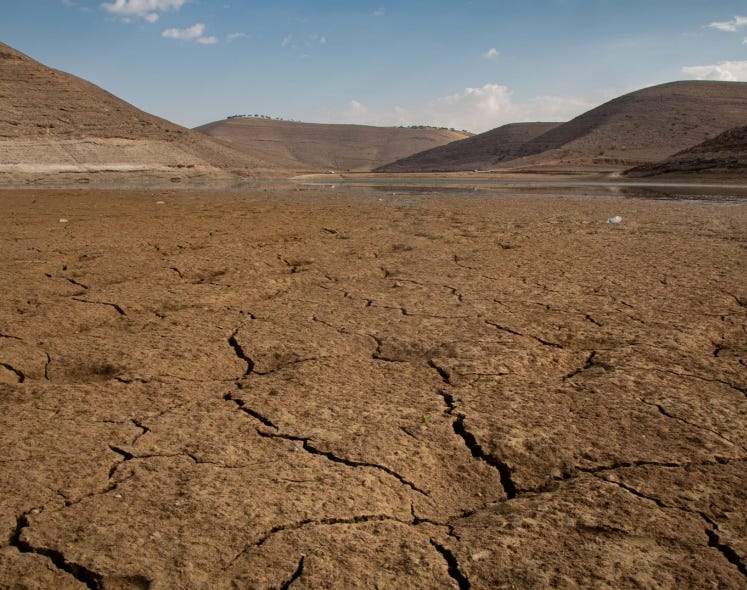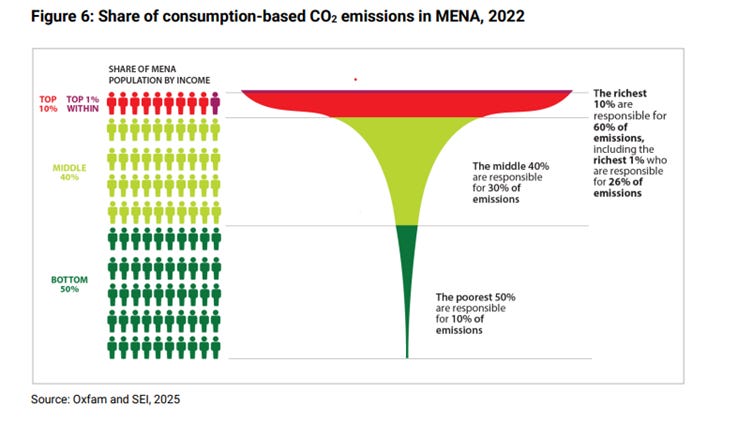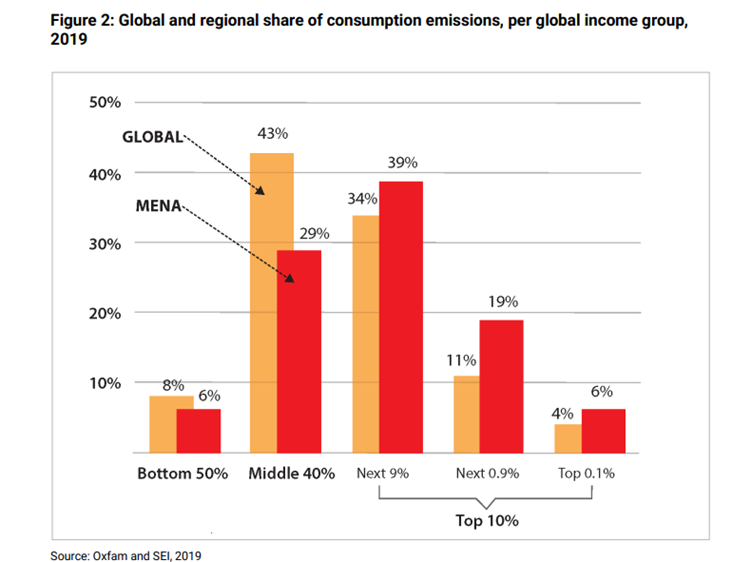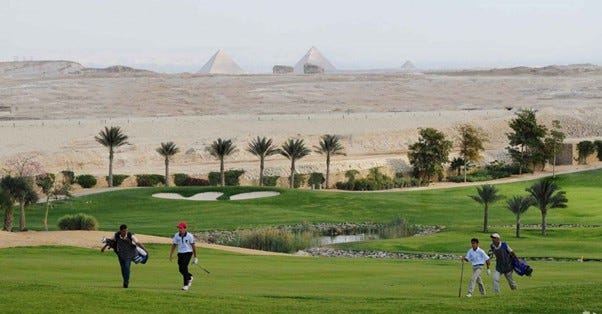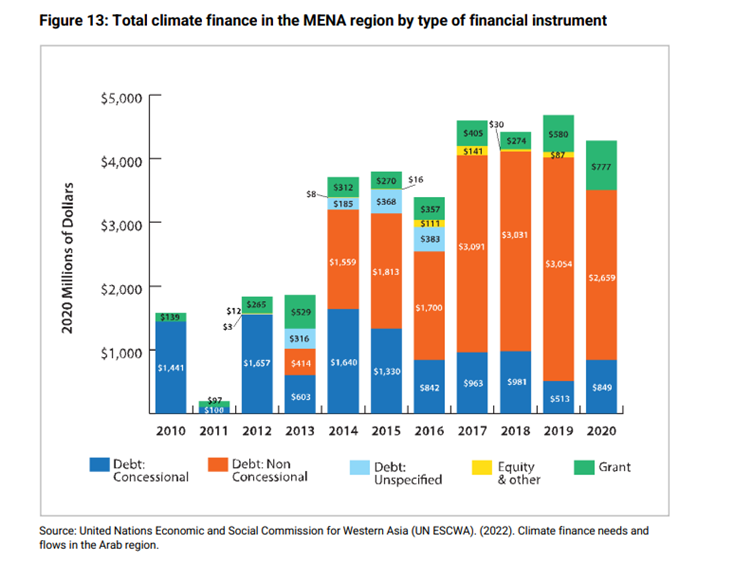The 1% in the Middle East and North Africa emit more than twice the poorest half
The latest research into climate and inequality in MENA region.
Oxfam has been highlighting vast emissions inequality between income groups since 2020. In 2023, we released the most comprehensive study of global climate inequality we have ever undertaken. This was followed up last year with an investigation into billionaire emissions from their super yachts, private jets and investments of the super-rich and how the rich are fuelling inequality, hunger and death.
This year’s forthcoming research, due to be released ahead of COP 30 in Belém, Brazil, has the latest up-to-date figures on the emissions of the super-rich and will set out how they are squandering the little remaining carbon budget, while using their enormous economic and political influence to lock the world into climate disaster.
In the build-up to COP 30, the Middle East and North Africa (MENA) Oxfam team have also released our first regional research into climate and inequality, with shocking findings.
You can see all our climate and inequality publications on our new hub page.
MENA climate and inequality, in numbers
A region already in climate crisis. MENA is already one of the hottest, most water-scarce regions on Earth, with temperatures rising 1.5°C over the past 30 years, more than twice the global average.
Unequal in wealth…MENA is one of the most unequal regions in the world. Half of the countries with the most significant growth in wealth inequality worldwide are in MENA and the region’s billionaires increased their wealth by 65% from US$54.2bn to US$89.5bn in 2024 alone.
Unequal in emissions…The wealthiest in MENA disproportionately contribute to climate change while insulating themselves from its consequences. The richest 1% in MENA emit more than twice as much as the poorest half of the population. On a per capita basis, the richest 0.1%, whose annual emissions are equivalent to driving around the planet about 56 times, emit 465 times more than someone in the poorest 50%.
Five of the region’s billionaires flew in their private jets for 1,300 hours in a single year, the equivalent of circumnavigating the world over 42 times.
More unequal emissions than globally. In 2019, the wealthiest 10% had even higher consumption-based emissions than the same income groups at the global level, with 64% of the region's emissions, compared to 50% globally. The richest 1% in the MENA region were responsible for 25% of the region's carbon emissions in 2019 vs. 16% globally.
Driven by fossil fuel extraction and export. Oil-producing Gulf nations such as Saudi Arabia, the UAE, and Qatar have generated immense wealth for a small elite. In 2022, Saudi Arabia, with a population of 32 million, produced 34% of the region’s total greenhouse emissions, while Sudan, with a population of 50 million people, was responsible for close to zero.
Not all in the same boat. The outsized emissions of the richest are accelerating the climate crisis. 83% of the MENA population already face water scarcity. Water scarcity will likely force girls to drop out of school, as their unpaid work will increase because collecting water takes longer.
Egypt’s 40 golf courses consume up to 1 billion cubic meters of water annually, enough to supply 54 million people with 50 litres of water per day in a country gripped by chronic water shortages.
Funding the finance gap. Decades of austerity policies and sustained public spending cuts have exacerbated both the climate and inequality crises. MENA governments are either unwilling or unable to invest to meaningfully address the climate emergency.
While at least US$570bn is needed for climate adaptation and mitigation, only US$34.5bn of the required amount has been raised for public international climate finance in the region, covering less than 6% of Nationally Determined Contribution requirements. Most funding has been allocated through traditional or concessional loans, as the graph below shows.
Taxing the rich. Those most responsible for climate breakdown should pay. The richest 1% in MENA hold 48% of financial wealth, but tax evasion, exemptions and privileges for the rich drain public funds needed for climate action.
Read the full report ‘Not Everyone is in the same boat’ for all the details behind these numbers.
Something to read and listen to
Read Al Jazeera columnist Tafi Mhaka’s great piece on Africa's billionaire boom based on Oxfam’s Africa inequality report.
Check out The EUs official polling (the EU barometer) which found that 65% of EU citizens support a minimum tax on the wealthiest 0.001%:
Read this article that looks at how rich politicians are in 41 countries compared to ordinary citizens. Legislators in South Africa on average have 200 times more wealth than the citizens they represent.
Read about how only 9 of the 256 billionaires actually followed through on giving away half their wealth



